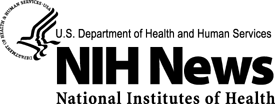| NIH Researchers Find that Combining Steroids with Protease
Inhibitors Results in a Drug Interaction that may Increase the Risk of Bone
Damage in HIV Patients
A study by researchers at the National Institutes of Health (NIH) indicates
that a steroid medication taken with an HIV protease inhibitor may increase the
risk of bone damage in HIV-infected patients.
The drug interaction may also increase the risk of Cushing’s syndrome, a hormonal
disorder caused by prolonged exposure of the body's tissues to high levels of
steroids.
Published in the Dec. 15 issue of the Journal of Acquired Immune Deficiency
Syndrome, the study showed that ritonavir, a protease inhibitor used to
treat HIV patients, taken with the corticosteroid medication, prednisone, significantly
increased the concentrations of prednisolone — the active form of prednisone — in
the systems of healthy volunteers.
“Physicians have noted bone lesions on scans of HIV patients treated with steroids
for inflammation,” said Dr. Scott Penzak, NIH Clinical Center pharmacist and
lead author of the study. “We wanted to find out if the problems might be at
least partially explained by an interaction between the steroids and HIV drugs.”
Corticosteroids are used to provide relief for inflamed areas of the body. They
lessen swelling, redness, itching, and allergic reactions. They are used to treat
a number of conditions, including severe allergies, skin problems, asthma, and
arthritis.
Researchers gave ten healthy volunteers a 14-day course of low-dose ritonavir.
They also gave the volunteers three doses of prednisone. One dose of prednisone
was given before ritonavir was started as a baseline. A second dose was given
after four days on ritonavir and a third dose was given after 14 days on ritonavir.
Blood samples were taken after each dose of prednisone to determine steroid levels.
Prednisolone concentrations were 41 percent higher than the baseline amount
after the drugs were taken together four days into the ritonavir regimen and
30 percent higher after the drugs were taken together 14 days into the regimen.
“These are statistically significant increases,” said Penzak. “They indicate
that when the drugs are taken together, steroid concentrations in the body may
rise to levels that cause side effects in some individuals.
“These results serve as a caution to clinicians treating HIV patients on concurrent
steroid therapy,” said Penzak. “They may choose to start with lower steroid doses
or increase their level of toxicity monitoring compared to steroid recipients
who are not taking protease inhibitors.”
“It is these small steps that advance the safe practice of medicine,” said Dr.
John Gallin, director of the NIH Clinical Center. “Through continued clinical
research, we can improve the health of all Americans.”
The study team included researchers at the NIH Clinical Center and the National
Institute of Allergy and Infectious Diseases.
The team plans to continue studies of the blood levels of individuals on steroids
and other HIV medications.
The NIH Clinical Center is the clinical research hospital of the National
Institutes of Health. Through clinical research, physicians and scientists
translate laboratory discoveries into better treatments, therapies and interventions
to improve the nation's health.
NIAID is a component of the National Institutes of Health, an agency of
the U.S. Department of Health and Human Services. NIAID supports basic and
applied research to prevent, diagnose and treat infectious diseases such as
HIV/AIDS and other sexually transmitted infections, influenza, tuberculosis,
malaria and illness from potential agents of bioterrorism. NIAID also supports
research on transplantation and immune-related illnesses, including autoimmune
disorders, asthma and allergies.
The National Institutes of Health (NIH) — The Nation's Medical Research
Agency — includes 27 Institutes and Centers and is a component of
the U. S. Department of Health and Human Services. It is the primary Federal
agency for conducting and supporting basic, clinical, and translational medical
research, and it investigates the causes, treatments, and cures for both common
and rare diseases. For more information about NIH and its programs, visit http://www.nih.gov. |

